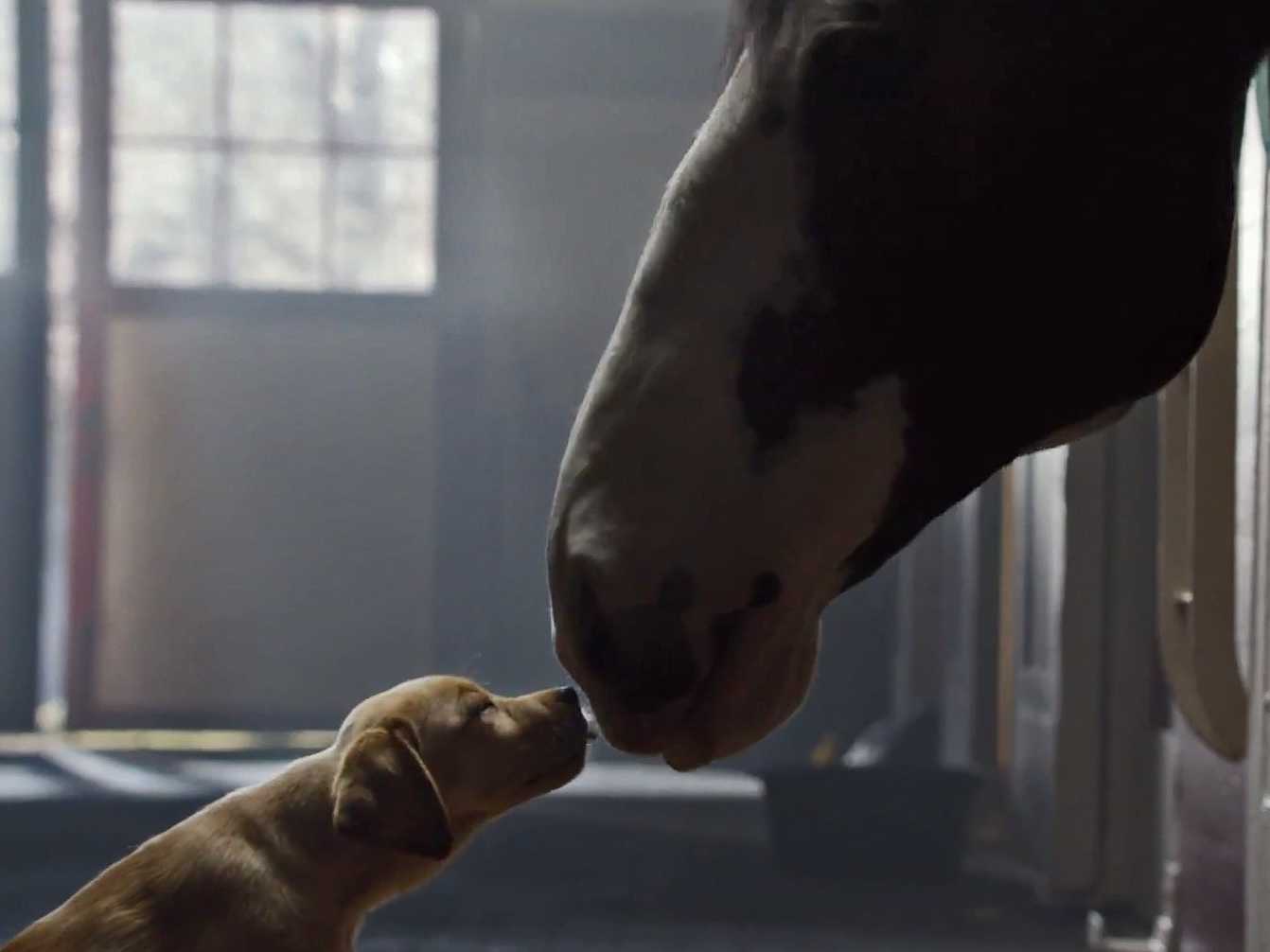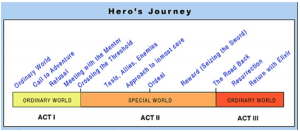
How Stories Impact The Brain…And What That Can Mean For Brands (Joy Steinberg)
An earlier article by Joy Steinberg on the impact of story-telling on marketing can be found here.
Have you ever had one of those days when you cry at a laundry detergent commercial?
You know the type…adorable baby, doting mom and perhaps even a cuddly puppy all frolicking amid plush white towels. Well, you were not simply having an over emotional episode AND you are not alone. In fact, it has been scientifically proven that compelling storytelling evokes a strong neurological response – often triggering action.
Recent studies have contributed more depth of understanding how stories change our attitudes, beliefs and behaviors. Examples might include crying at a commercial, trying a new flavor of ice cream or buying the latest digital game. If you’re reading this as a fellow marketer, the relevance is unmistakable. Stories take on multiple forms and formats ranging from novels, movies, theater, visual art – and even range to commercials and advertisements.
In the marketing realm, understanding the biology and neuroscience behind what makes an effective story is crucial for brands to create meaningful relationships and build loyalty. Here we cover three main facets:
- WHAT a well-constructed story ‘looks like’
- HOW and WHY it impacts the brain and body
- WHY it matters and WHAT marketers and brands can to do WHAT a well-constructed story ‘looks like’.
The National Storytelling Network defines storytelling as
the interactive art of using words and actions to reveal the elements and images of a story while encouraging the listener’s imagination. The two foundational elements are: 1. Storytelling is interactive, and 2. Storytelling involves a two-way interaction between a storyteller and one or more listeners.
Many of us know from Joseph Campbell’s Hero’s Journey that long-lasting and treasured stories commonly feature a dramatic arc with foundational elements. First, the hero faces a struggle, then finds ability to overcome the challenge -ultimately continuing onto another journey with this new-found strength and perspective.
While the full journey has been broken into a dozen or more stages. Essentially it is a three-act structure: Act I: Ordinary World – Hero starts narrative as an ordinary person. One we can relate to on some level. Act II: Special World – Hero faces challenges, both internal and external, finding tools to overcome. Act III: Ordinary World – Hero returns to his/her ‘new normal’ with expanded perspectives and strength based on the hard-fought learnings of the experience.
All of this only to continue to yet another journey. Such is the making of novels, movies, advertisements and life.
So, this tell us that one of the foundational steps things you can do to create a story is utilize Campbell’s three act Hero’s Journey structure to connect emotionally with your audience. The narrative from blockbuster films, Star Wars and The Lion King are two shining examples.
An example in the consumer marketing realm would be Budweiser as their Super Bowl ILVIII Puppy Love commercial. We will explore this advertisement approach and result in more detail. HOW and WHY it impacts the brain and body. With this context of a well-constructed story, we’ll now delve into the biological and neurological impacts.
As founding director of the Center for Neuroeconomic Studies and professor of economics, psychology and management at Graduate University, Dr. Paul Zak is a renowned expert in this space. His research shows that the ‘brain is highly attracted [to] the story style’. In a series of experiments, Dr. Zak’s lab discovered that after having study participants watch a short, emotional story about a father and son – their bodies produced two neurochemicals: 1. Cortisol–which people feel as distress and encourages them to pay attention to the story. 2. Oxytocin–which promotes connection and care and encourages people to feel empathy.
Following the film viewing, study participants were asked by Zak’s researchers to donate money to a stranger. Results found that individuals with the higher amounts of oxytocin were much more likely to give money to someone they’d never met. These donation findings illustrate the power of storytelling to trigger measurable results.
Dr. Zak describes how this behavioral study of oxytocin has proven that when the brain synthesizes oxytocin, explaining that “people are more trustworthy, generous, charitable, and compassionate in his article ‘How Stories Change the Brain’. These results highlight the biological impact of storytelling and signal potential application for consumer marketing.
Further examination regarding relevance and application follows in the next section. WHY it matters and WHAT marketers and brands can to do With evidence that effective storytelling drives tangible action, the implications and opportunities for consumer marketing are significant. This research evidently was not lost on Budweiser, as their Super Bowl ILVIII Puppy Love Commercial beautifully illuminates the art and science of storytelling to connect with consumers in a meaningful and memorable way.
In her article for Inc.com journalist Zoe Henry tells us why the ‘Puppy Love’ is the all-time most popular Super Bowl Ad. According to Henry, “the beer company took the time to develop a heartfelt story, rather than falling back on cheap humor”.
Gareth Schweitzer, co-founder and president of Kelton Global is tells Henry that “Budweiser is taking you on an emotive journey, and they’re using storytelling to do it”. Mr. Gareth is no stranger to the power of storytelling in marketing, given his NY-based marketing and research firm has worked with widely recognized brands such as Target, Domino’s and General Electric.
Widely recognized for the powerful and effective use of storytelling, the narrative of Budweiser story-ad was recounted as follows in the 2014 Harvard Business Review feature ‘The Irresistible Power of Storytelling as a Strategic Business Tool’.
In “Puppy Love,”
a perfectly adorable yellow lab becomes inseparable friends with a Clydesdale. Sneaking out of his pen, the pup and the horse “talk” in the stables and cavort on an idyllic farm –until someone comes to adopt the dog.
The distressed puppy whines and places his paws against the window of the car set to take him to his new home. All seems lost until the Clydesdale rallies the other horses to stop the vehicle from leaving.
Reunited, the two commence frolicking in the horse pasture and, we assume, live happily ever after.
Note how gracefully the Budweiser ‘Puppy Love’ narrative fits into Campbell’s Hero’s Journey framework. So well in fact, Johns Hopkins researcher, Keith Quesenberry, predicted the ad would be a hit based on his two-year study of 108 Super Bowl commercials as published in The Journal of Marketing Theory and Practice in Fall 2014. Kia and their agency, David & Goliath, took this approach quite literally with their 2017 Super Bowl Ad “Hero’s Journey”, promoting their new hybrid crossover, the Niro.
The add blends comedy into the three-act structure, features Melissa McCarthy, while she faces difficulties in actively living one’s principles Quesenberry and fellow research partner Michael Coolsen explore brands’ use of strategies to sell product confirming that story structure predicted the commercials’ success, or lack thereof. Quesenberry states in his interview with HBR.org: “People are attracted to stories because we’re social creatures and we relate to other people.”
That should be no surprise to us. The concept and evolution of storytelling has roots dating back to prehistoric times with cave art illustrating stories. It seems now our cave art is commonly communicated via flat screens in multiple sizes. While the storytelling is literally ancient history, it is by no means outdated or obsolete.
Marketers may be tempted to focus on product benefits and features to make the sale. However, there is some compelling scientific evidence to show the influence of an evocative and well-structured story. In closing, it seems apropos to share a Hopi American Indian proverb – “Those who tell the stories rule the world”.
Joy Steinberg is a skilled qualitative researcher committed to providing brand insights and facilitating corporate social responsibility. She has extensive experience in project management, product marketing, consumer affairs, and marketing communications. She is a creative and an analytical thinker with a proven ability to strategically plan and implement tactics. Joy’s concern for positively impacting consumer and corporate cultures has led her to pursue extensive service opportunities. She has been actively involved and also mentored leadership in local and global non-profit organizations such as Big Brothers and Sisters, Step-Up Ministries, Dress for Success, Habitat for Humanity, and Cross-Cultural Solutions.
Tagged with: Budweiser, Gareth Schweitzer, Hero's Journey, Joseph Campbell, Paul Zak, storytelling, Super Bowl commericals, Zoe Henry
